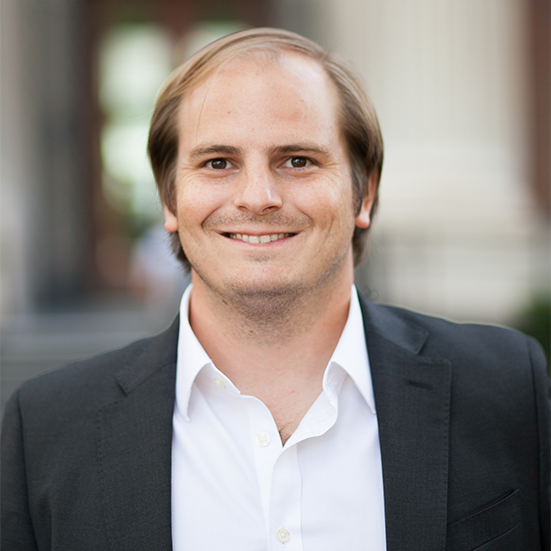The US fintech company is making headway towards stage three of its business plan in Latin America (Latam).
The Brazilian and Mexican markets have taken the centre stage at Luma Financial Technologies after the company took the lead in serving Latam investors based in the US and onshore investors in other Latam markets.
We saw this as an opportunity to bring forward this first open architecture platform for Flex options in Brazil - Fernando Concha Bambach
For the Ohio-based fintech company, its third stage for Latam kicked off with a platform designed to scale the flexible exchange (Flex) options market (Mercado de Opções Flex), which is ‘the fast-growing unfunded structured options market in Brazil’, according to Fernando Concha Bambach (pictured), sales head for Latam at Luma.
“The idea of internationalising Luma was seeded in 2020, starting from Regulation S, [which allows US structured notes to be sold offshore],” Concha Bambach told SRP.
In Brazil, the platform aims to facilitate distribution for advisors and streamline operations for broker-dealers in the Flex options space.
The move was also driven by regulatory tailwinds from the Comissão de Valores Mobiliários (CVM) last year, which ended legal exclusivity between certain broker-dealers and their associated financial advisory groups from 1 June 2023.
“We saw this as an opportunity to bring forward this first open architecture platform for Flex options in Brazil,” said Concha Bambach.
With a local entity presence, Luma built up the platform in two and a half months before rolling it out on 9 February.
Morgan Stanley is the first market maker onboard while two others are in process, according to Concha Bambach, a former Banco Santander sales and structurer.
Launched in 1993 by the Cboe Options Exchange, Flex options are customisable across asset classes in an over-the-counter (OTC) environment. In Brazil, they are traded on the Brasil, Bolsa, Balcão exchange (B3)
The São Paulo-based exchange reported BRL250 billion (US$48 billion) traded volume of Flex options in 2023. Approximately BRL106 billion came from Flex options on stocks, guaranteed by B3, a central counterparty (CCP), a 24% increase from 2022. Commodity underliers contributed BRL31 billion.
Investors range from retail, domestic private banks, independent asset managers and institutional investors, according to Concha Bambach.
Platform highlights
The Luma platform features direct product sourcing with a goal to optimise distribution, sales and client interactions.
“Advisors can send products to end clients directly with term sheets, investment rationale and payoff graphs,” said Concha Bambach. “They can access their entire mark-to-market positions on the platform and request an unwind if they wish.”
Our platform enables broker-dealers to complete the B3 registry automatically and therefore to comply with T=0 settlement - Fernando Concha Bambach
There are currently approximately 25,000 Flex options on single stocks available on the platform across 24 payoffs, including knock-out, knock-in, bidirectional, collar, fence, rebate, spread and straddle. The most traded so far are forward knockout, call ratio and collar knock-in.
Over 60 financial advisors have started to use the platform, half of which access it on a daily basis, while four broker-dealers are onboard.
“The platform also automatically calculates the deltas of thousands of option trades, so broker-dealers can properly hedge the positions on behalf of the market makers,” said Concha Bambach, without disclosing the existing traded volume.
Furthermore, Flex options in Brazil have traditionally been settled on T+1, the next business day after a trade, but this year there has been a push from CVM for same day settlement.
“Our platform enables broker-dealers to complete the B3 registry automatically and therefore to comply with T=0 settlement,” he said.
Previously, broker-dealers needed to manually calculate each option leg for a traded strategy through B3, which was highly prone to human error and ended up being “an unbearable operational burden”, added Concha Bambach.
In terms of fee model, market makers will pay a percentage of their traded notional as one-time fee at month-end, which is also applicable to structured notes issuers at the advisor-focused fintech company.
Luma has partnered with a group of 30 issuers, of which 23 issue SEC-registered or 3(a)(2) structured notes serving the US market. Structured notes under Regulation S and market-linked certificates of deposits (MLCDs) are offered by 25 and nine of the issuers, respectively.
Post-launch
Concha Bambach and his team expect to incorporate more payoffs and functions to its Flex option platform including suitability check, request for quote (RFQ) and lifecycle management, which are already available for US structured notes.
In addition, the volume reported by B3 reflects a “huge demand” for commodities, an asset class Luma expects to add to equity on its open-architecture platform.
“We’ve also been looking at the structured note space in Brazil, locally known as certificados de operações estruturadas (COEs), which is smaller than the Flex option market and currently is focused on bond repacks, which are kind of like a reverse convertible on bonds,” said Concha Bambach.
Do you have a confidential story, tip, or comment you’d like to share? Write to summer.wang@derivia.com.
